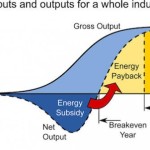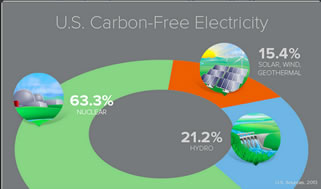The Feasibility of Changing Our Grid and Autos to Renewables

We all want an energy grid that’s cleaner and better for the environment. In fact, most scientists agree that unless something is done majorly to curb CO2 emissions worldwide, the Earth will reach a tipping point and climate change will cause irreparable harm over the next several hundred years to both people, and the environment. Many other scientists argue that it may already be too late to stop the damage done by these emissions.
 There’s no easy fix to these sorts of issues, but we do know where to begin. First and foremost, we need to get both gas and coal off the grid, and as quickly as possible. Renewables are not in a position presently that they can actually augment our needs, as usually 60% of the grid needs to be baseload, which cannot be supplied by wind or solar. One hypothesis is that we can build enough batteries to augment this, but this is a serious problem. In the whole of human history combined, we still have not produced even 10 GWhr of Lithium Ion batteries. A typical city of 1 million would need 100 GWhr of storage to augment its needs for electricity during periods of low wind or low solar production. This is just one city, the world would require millions of GWhr of storage, far more than all Lithium on earth, and would likely cost 10s of trillions of EUR to produce the facilities to mine and manufacture this supply of chemical storage. Clearly, new thinking is needed.
There’s no easy fix to these sorts of issues, but we do know where to begin. First and foremost, we need to get both gas and coal off the grid, and as quickly as possible. Renewables are not in a position presently that they can actually augment our needs, as usually 60% of the grid needs to be baseload, which cannot be supplied by wind or solar. One hypothesis is that we can build enough batteries to augment this, but this is a serious problem. In the whole of human history combined, we still have not produced even 10 GWhr of Lithium Ion batteries. A typical city of 1 million would need 100 GWhr of storage to augment its needs for electricity during periods of low wind or low solar production. This is just one city, the world would require millions of GWhr of storage, far more than all Lithium on earth, and would likely cost 10s of trillions of EUR to produce the facilities to mine and manufacture this supply of chemical storage. Clearly, new thinking is needed.
The First Step Forward
This may sound grim at first glance, but there are many ways that we can reach these goals, and hopefully do so before the Earth is irreparably damaged and our place in it is threatened. France has a very strong nuclear energy mix, and this is highly advantageous. It will be very easy for a high infrastructure country like France, with such green production sources, to augment this with renewables and drive down to zero energy grid emissions. However, for much of the world, those that seem to value the environment at less than zero dollars, this will be much harder to achieve.
The biggest challenge, isn’t this front of the energy scheme. We already know completely green ways to produce electricity and energy, and know of several of them! Nuclear is definitely the greenest, with the lowest CO2 emissions per KWhr by far, even compared to renewables, but automotive and heating are really the contributors that we need to get under control. Automotive requires significant technological leaps forward, as batteries are not energy dense, last long enough, nor are cheap enough for cars. They also carry some significant risk for fire and thermal runaway during charging.
We all want to charge our cars are night and be able to go 500 miles on a charge tomorrow, or recharge our cars in 90 seconds. Yet, the engineering obstacles between now and then are monumental. One of our major goals, as a result, is to highlight the need for nuclear buildout, advanced nuclear reactors with minimal waste (such as the ASTRID project in France), get funding to the hands of talented engineers to pursue research on these next generation battery and capacitor systems, and really transform the energy landscape. The energy landscape may be something we all already know about, but it’s also something we need to remember as the most important area to improve going forward.
